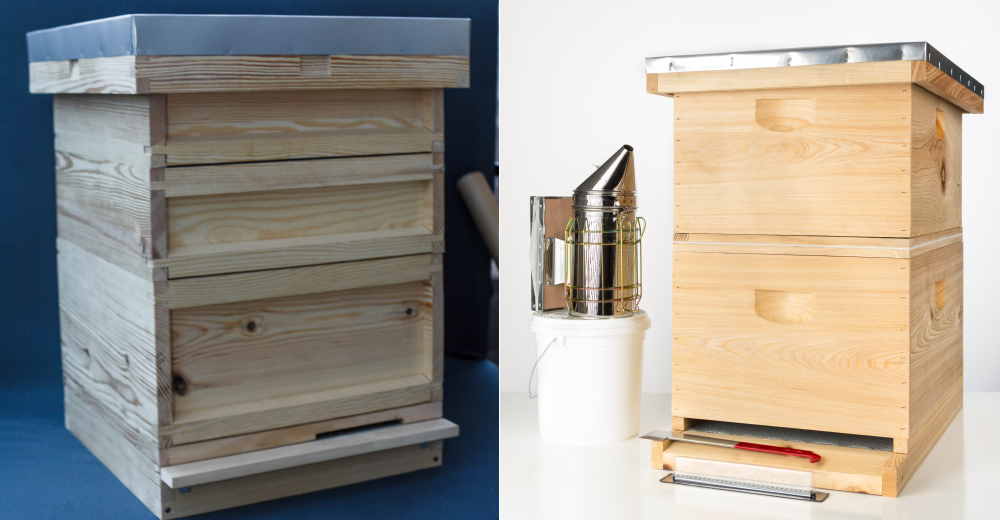Eco-friendly tradition: buy a bee hive and don't repent of this
Like any craft with its history and tradition, beekeeping is conservative. Especially when it comes to materials. Beekeepers are suspicious of polyurethane foam and expanded polystyrene hives. And for good reason. This is one of the cases when the emotional expression "Only natural materials should be in the apiary!" easy to confirm with rational arguments.

Disadvantages of polyurethane and polystyrene foam
Beehives made from these materials also have advantages. First of all, they are lightweight. Transferring from place to place, loading onto a wandering platform, putting in a winter house - all these procedures require less muscular strength. In addition, the polymer does not allow water to pass through, does not swell from moisture, it is not susceptible to mold and parasites, and also breaks records in thermal insulation. This not only ensures comfort and safety for the bees, but also allows to save in feed.

So what is the problem with such materials and why do experienced beekeepers still advise to buy a wooden hive? It's not just about stereotypes:
- Toxicity. Polyurethane and polystyrene foam emit hazardous chemical compounds. In the light these materials emit chemicals in small doses, but under the scorching sun they do it much more actively, and they are being destroyed at the same time. Painting can only partially solve this problem.
- Fragility. It is easy to damage such hive with a chisel, when tearing off the frame glued with propolis or dividing several bodies in a multi-body system. Sometimes even the bees themselves gnaw through its walls, but more often mice can do it.
- Fire hazard. Synthetic materials are highly flammable. They cannot be treated by a burner for disinfection purposes. Even the use of an ordinary smoker requires special care.
The wooden beehive doesn’t have these disadvantages. But it may have others if the wrong wood species are selected. We manufacture products for beekeeping and give preference to the pine.

Quality comes first
Some 20-30 years ago, beekeepers were convinced that the resinousness of conifers not only increases the weight of the hive, but also scares away bees with their specific smell. Practice has not confirmed this. In addition, the wood undergoes thermal drying, which reduces the resin content.

Pine is a balanced material. This is a compromise without having to sacrifice really important properties. It is more resistant to external adversity than alder and linden. And its thermal conductivity with the correct arrangement of the fibers equals 150 W/(m·K). This is only one third more than that of the cedar, in which this value equals 95 W/(m·K). But pine is much cheaper and more affordable. Recall that the lower the thermal conductivity, the more comfortable the hive is. It is warmer in winter and cooler in summer.

We manufacture wooden beehives and the accessories for them. Including the manufacture according to individual drawings.
We focus on the quality of processing and dimensional accuracy. Therefore, assembly and combination are never difficult. Our assortment includes BS National Beehive, Dadant - Blatt, Langstroth - Ruth hives, as well as wooden frames for all these types of beehives.
However our customers around the world appreciate not only the high quality and richness of choice. Beekeeping is inseparable from tradition. Our tradition include expert consultations, prompt delivery and affordable prices.

Take care of comfort, of the bees and of your own: order wooden hives and accessories at CraftHouz.






